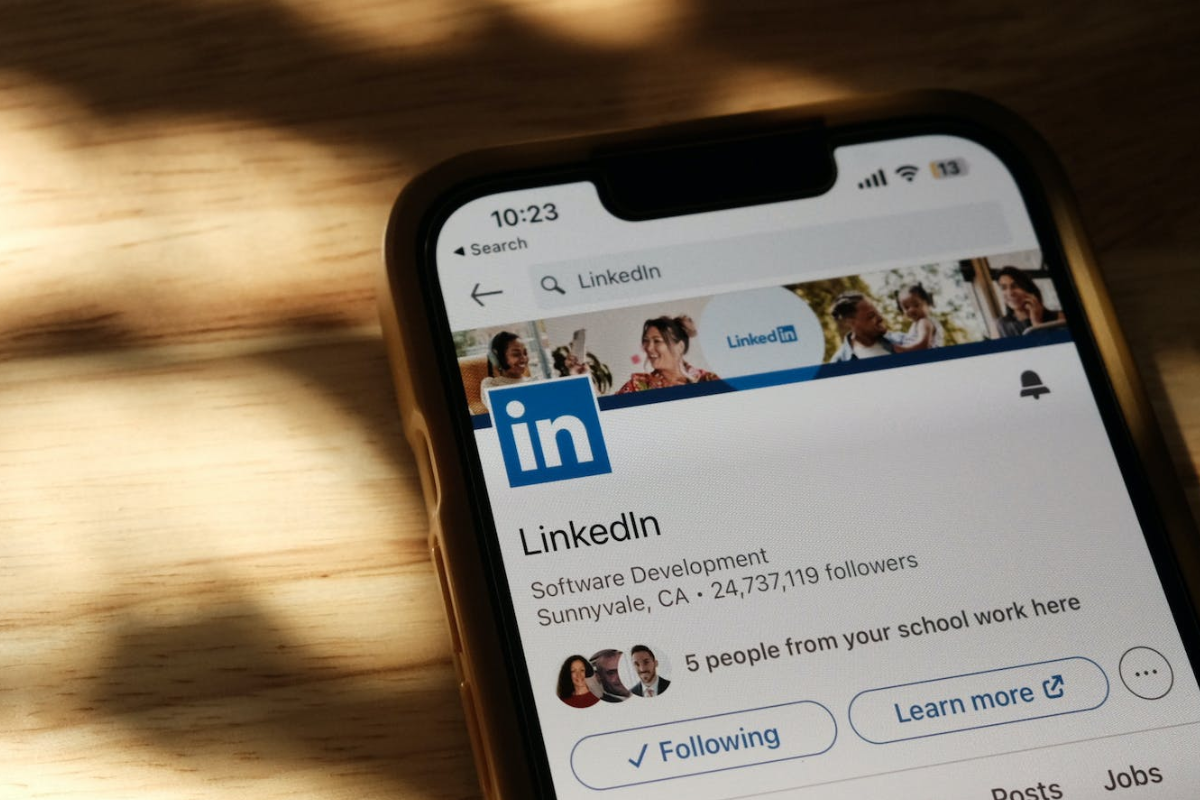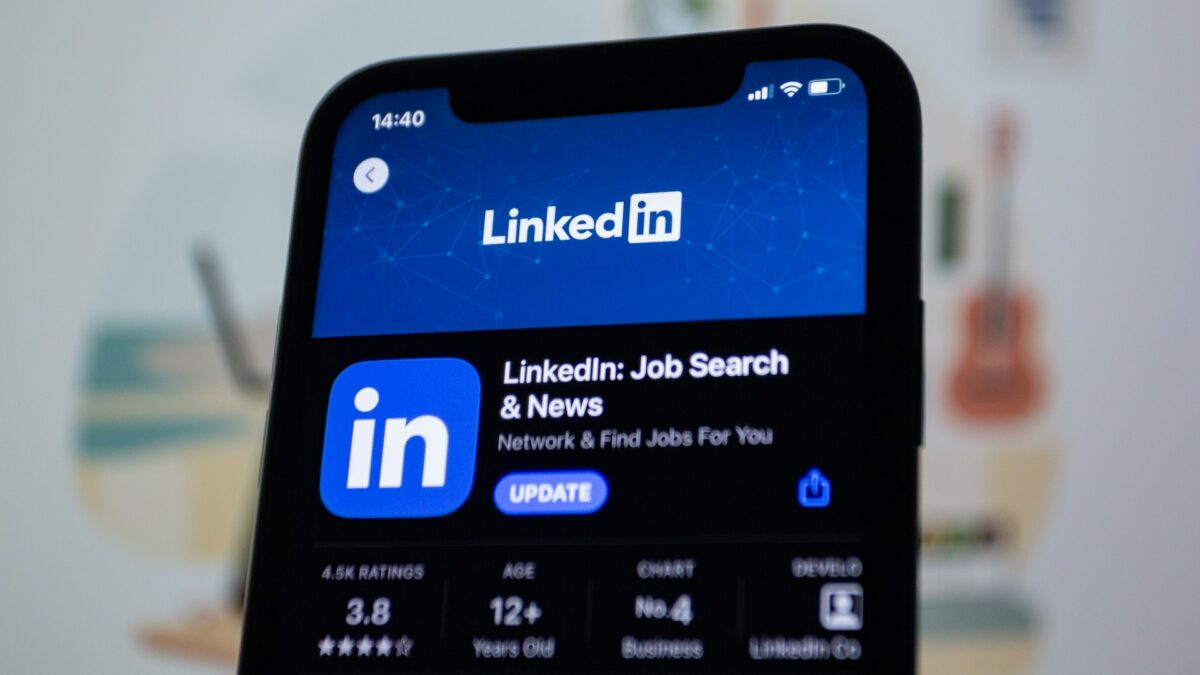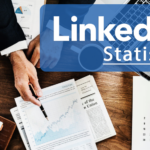Are you wondering what is a headline on LinkedIn?
A LinkedIn headline is a brief statement that appears directly below your name on your profile.
It’s a short and snappy description of your professional identity, and it’s one of the first things that people see when they come across your profile.
Your LinkedIn headline is important because it’s often the first impression that you make on potential employers or business partners.
It’s a chance to showcase your unique skills and experience, and to grab the attention of people who might be interested in working with you.
A well-crafted headline can help you stand out from the crowd, while a generic or uninspired one can make you blend in and be overlooked.
So, it’s important to put some thought and effort into creating a headline that accurately reflects your professional brand and catches people’s attention.
Post Contents
What is a Headline on LinkedIn?

Your LinkedIn headline is a brief description of your professional identity.
It appears below your name and profile photo, and it is one of the first things that people see when they visit your profile.
Your headline should be concise and attention-grabbing, showcasing your skills, experience, and expertise.
It should give people a quick overview of who you are and what you can offer.
LinkedIn allows you to use up to 220 characters for your headline, so make every word count.
Here are some tips for crafting an effective LinkedIn headline:
- Be specific: Use keywords that describe your industry, job function, or areas of expertise. This will help you appear in search results when people are looking for someone with your skills.
- Highlight your achievements: If you have any notable accomplishments or awards, include them in your headline. This will help you stand out from the crowd and show that you are a high achiever.
- Be creative: Don’t be afraid to use humor or personality in your headline. This can help you make a memorable impression and show that you are a unique individual.
- Avoid buzzwords: Stay away from overused terms like “guru,” “ninja,” or “rockstar.” These words are cliché and don’t add any real value to your profile.
Your LinkedIn headline is an important part of your profile, so take the time to craft a compelling one that showcases your strengths and expertise.
With the right headline, you can make a great first impression and attract the attention of potential employers, clients, or collaborators.
Importance of a LinkedIn Headline
Your LinkedIn headline is an essential part of your LinkedIn profile.
It is the first thing people see when they come across your profile.
It is a brief statement that summarizes your professional identity, skills, and experience.
In this section, we will discuss the importance of a LinkedIn headline.
First Impression
Your LinkedIn headline is the first impression you make on people who come across your profile.
It is like a headline in a newspaper or a subject line in an email.
A well-crafted headline can make a great first impression and encourage people to read more about you.
On the other hand, a poorly written headline can turn people off and make them move on to the next profile.
Visibility
Your LinkedIn headline is visible to everyone who comes across your profile, including people who are not in your network.
It is also visible in LinkedIn search results.
Therefore, it is essential to make sure that your headline accurately reflects your professional identity and the type of work you do.
This will help you attract the right people to your profile and increase your visibility on the platform.
Connection Request
Your LinkedIn headline is also an important factor when it comes to sending and accepting connection requests.
When you send a connection request, your headline is the first thing the recipient sees.
A well-crafted headline can make your request stand out and increase the chances of it being accepted.
Similarly, when you receive a connection request, you can use the person’s headline to decide whether or not to accept the request.
In conclusion, your LinkedIn headline is a critical component of your profile.
It is the first impression you make on people who come across your profile, it increases your visibility on the platform, and it can help you send and accept connection requests.
Therefore, it is essential to take the time to craft a compelling headline that accurately reflects your professional identity and the type of work you do.
Creating a Compelling LinkedIn Headline

Your LinkedIn headline is the first thing that potential employers or clients will see when they search for you on LinkedIn.
It is a brief description that appears right under your name in search results.
A strong headline can help you stand out from the crowd and make a great first impression.
Here are some tips for creating a compelling LinkedIn headline.
Using Keywords
One of the most important things to keep in mind when creating your LinkedIn headline is to use relevant keywords.
These are the words and phrases that people are likely to use when searching for someone like you.
Including relevant keywords in your headline can help you rank higher in search results and increase your visibility.
For example, if you’re a marketing professional, you might want to include keywords like “digital marketing,” “social media,” or “content marketing” in your headline.
This will help you show up in search results when someone is looking for someone with those skills.
Showcasing Achievements
Another way to make your LinkedIn headline more compelling is to showcase your achievements.
Instead of simply listing your job title, try to highlight some of your most impressive accomplishments.
This can help you stand out from other professionals in your field.
For example, instead of saying “Marketing Manager,” you could say “Marketing Manager with a track record of driving 50%+ revenue growth through innovative campaigns.”
This highlights your achievements and makes you more attractive to potential employers or clients.
Incorporating Job Titles
While it’s important to showcase your achievements, it’s also important to include your job title in your LinkedIn headline.
This helps people quickly understand what you do and what your area of expertise is.
For example, you might say “Marketing Manager specializing in social media and content marketing.”
This tells people that you’re a marketing professional with a focus on social media and content marketing.
Incorporating your job title into your headline can also help you rank higher in search results when people are looking for someone with your specific skills and expertise.
Remember, your LinkedIn headline is a brief snapshot of who you are and what you do.
By using relevant keywords, showcasing your achievements, and incorporating your job title, you can create a compelling headline that helps you stand out from the crowd and attract the right opportunities.
Tailoring Your Headline to Your Audience
Your LinkedIn headline is the first thing that people will see when they come across your profile.
It’s important to make a great first impression with a headline that accurately reflects who you are and what you do.
One way to do this is by tailoring your headline to your audience.
Here are some tips on how to do that:
Job Seekers
If you’re a job seeker, your headline should highlight your skills and experience.
Use keywords that are relevant to the job you’re seeking.
This will make it easier for recruiters to find you.
You can also include your job title and industry to make it clear what you do.
Here are some examples:
- Experienced Marketing Manager | SEO, PPC, Social Media
- Sales Professional | B2B, Business Development, Account Management
Recruiters
If you’re a recruiter, your headline should focus on your recruiting experience and skills.
You want to make it clear that you’re a recruiter and what your area of expertise is.
Use keywords that are relevant to the types of candidates you’re looking for.
Here are some examples:
- Experienced Recruiter | IT, Engineering, Finance
- Talent Acquisition Specialist | Executive Search, Diversity & Inclusion
Clients
If you’re looking to attract clients, your headline should focus on the benefits you can offer them.
Use keywords that are relevant to the services you offer.
You can also include your industry and job title to make it clear what you do.
Here are some examples:
- Marketing Consultant | SEO, PPC, Social Media
- Financial Advisor | Retirement Planning, Wealth Management
Remember, your headline is the first thing that people will see when they come across your profile.
Tailoring it to your audience will help you make a great first impression and attract the right people to your profile.
Leveraging LinkedIn for Job Search

When it comes to job searching, LinkedIn is a powerful tool that you can use to your advantage.
By leveraging your LinkedIn profile, you can increase your chances of getting noticed by recruiters and finding your dream job.
Here are some tips on how to use LinkedIn to your advantage:
Profile Views
Your LinkedIn profile is your digital resume, and it’s important to make sure that it’s up-to-date and professional.
Recruiters often use LinkedIn to search for potential candidates, and having a complete and well-written profile can help you stand out.
Here are some tips to optimize your profile:
- Use a professional profile picture
- Write a compelling headline that accurately reflects your skills and experience
- Customize your LinkedIn URL to make it easier to share
- Highlight your achievements and experience in your summary and job descriptions
- Use keywords that are relevant to your industry
Messages
LinkedIn allows you to connect with other professionals in your industry, and it’s important to take advantage of this feature.
By sending messages to recruiters and potential employers, you can build relationships and increase your chances of getting hired.
Here are some tips for messaging on LinkedIn:
- Personalize your messages to each recipient
- Keep your messages short and to the point
- Highlight your skills and experience
- Ask for an informational interview or coffee chat to learn more about the company
Networking
Networking is a crucial part of job searching, and LinkedIn makes it easy to connect with other professionals in your industry.
By joining groups and participating in discussions, you can build relationships and increase your visibility.
Here are some tips for networking on LinkedIn:
- Join groups that are relevant to your industry
- Participate in discussions and share your expertise
- Connect with other professionals in your industry
- Attend networking events and meetups
By leveraging your LinkedIn profile, you can increase your chances of getting noticed by recruiters and finding your dream job.
Use these tips to optimize your profile, send effective messages, and build your network.
Good luck with your job search!
The Role of Language and Character Limit
Language Use
Your LinkedIn headline is the first thing people see when they come across your profile.
It’s important to make a good impression by using clear and concise language that accurately represents who you are and what you do.
Avoid using jargon or overly technical terms that may not be familiar to everyone.
It’s also important to use language that is inclusive and welcoming.
Avoid using language that could be interpreted as discriminatory or offensive.
Instead, focus on using language that is positive and inclusive.
Character Limit
LinkedIn has increased the character limit for your headline from 120 to 220 characters.
This gives you more space to add keywords and highlight your skills and experience.
However, it’s important to use this space wisely.
While you now have more characters to work with, it’s still important to keep your headline concise and to the point.
Avoid using filler words or phrases that don’t add value to your headline.
Instead, focus on using keywords that accurately represent your skills and experience.
In addition to the headline, there are character limits for other sections of your LinkedIn profile.
For example, your summary has a character limit of 2,000, and your profile publication title has a limit of 255 characters.
It’s important to be mindful of these limits and use them to your advantage.
By using clear and concise language and being mindful of character limits, you can create a headline that accurately represents who you are and what you do.
This will help you make a good first impression and attract the right people to your profile.
LinkedIn Headline Examples
Your LinkedIn headline is the first thing that people see when they come across your profile.
It is an essential part of your online presence and is often the deciding factor for recruiters and employers to click on your profile.
A good headline can help you stand out from the crowd and make a great first impression.
Here are some LinkedIn headline examples to inspire you:
For Students
As a student, your LinkedIn headline should highlight your skills and interests.
Here are some examples:
- Marketing student with a passion for social media
- Aspiring journalist with a knack for storytelling
- Computer science student seeking internship opportunities
For Job Seekers
If you are actively looking for a job, your LinkedIn headline should showcase your experience and skills.
Here are some examples:
- Experienced project manager with a track record of success
- Sales professional with a proven ability to exceed targets
- Marketing specialist with expertise in digital campaigns
For Industry Professionals
If you are already working in your industry, your LinkedIn headline should reflect your expertise and achievements.
Here are some examples:
- HR manager with a focus on employee engagement and retention
- Financial analyst with experience in budgeting and forecasting
- Software engineer specializing in cloud-based solutions
In all cases, make sure to use keywords that are relevant to your job or industry.
This will help you appear in search results when recruiters and employers are looking for candidates with your skills and experience.
Remember, your LinkedIn headline is your chance to make a great first impression.
Take the time to craft a headline that accurately reflects your skills, experience, and personality.
With these LinkedIn headline examples, you are well on your way to creating a headline that will help you stand out from the crowd.
Key Takeaways
When it comes to your LinkedIn profile, your headline is one of the most important sections.
It’s the first thing people see when they visit your profile, and it can be the difference between getting noticed or being overlooked.
Here are a few key takeaways to keep in mind when crafting your LinkedIn headline:
Keep it Short and Sweet
Your headline is limited to 220 characters, so you need to make every word count.
Use concise language to convey your value proposition and unique selling proposition.
Avoid using buzzwords and jargon that may confuse or turn off potential connections.
Focus on Value
Your headline should clearly communicate the value you bring to the table.
What problems can you solve? What skills do you have that make you stand out?
Make sure your headline clearly communicates your value proposition to potential employers, clients, or collaborators.
Use Keywords
LinkedIn is a search engine, and your headline is one of the key areas where you can optimize for keywords.
Use relevant keywords that describe your skills, experience, and industry.
This will help your profile show up in searches and attract the right people to your profile.
Customize for Your Goals
Your headline should be tailored to your goals on LinkedIn.
If you’re looking for a job, your headline should focus on your skills and experience.
If you’re looking to network or build your brand, your headline should focus on your unique value proposition and what sets you apart.
Keep it Professional
Remember, LinkedIn is a professional network.
Your headline should be professional and reflect your personal brand.
Avoid using humor or anything that might be seen as unprofessional.
Keep it friendly, but also keep it polished and appropriate for your industry.






























